Loka
Loka is a Sanskrit concept in Indian religions, that means plane or realm of existence.
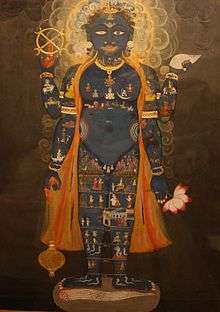
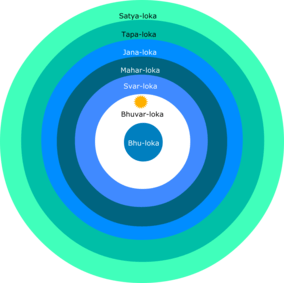
Buddhism
In early Buddhism, based upon the Pali Canon and related Agamas, there are four distinct worlds: There is the Kama Loka, or world of sensuality, in which humans, animals, and some devas reside, Rupa-Loka, or the world of refined material existence, in which certain beings mastering specific meditative attainments reside, and Arupa Loka, or the immaterial, formless world, in which beings to master formless meditative attainments reside. Arahants, who have attained the highest goal of Nibbana (or, Nirvana), have unbound themselves from individual (limited) existence in any form, in any realm, and cannot be found here, there, or in between, i.e., they are found in no Loka whatsoever.
Hinduism
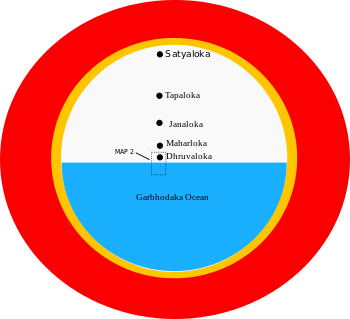
According to Hindu cosmology, the universe contains 7 upper and 7 lower planes of existence.
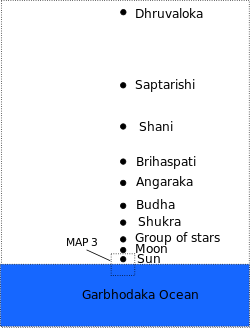
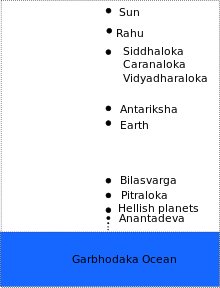
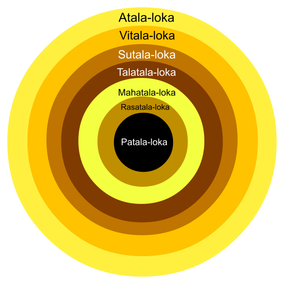
In the Puranas and in the Atharvaveda, there are 14 worlds, seven higher ones (Vyahrtis) and seven lower ones (Pātālas), viz. bhu, bhuvas, svar, mahas, janas, tapas, and satya above and atala, vitala, sutala, rasātala, talātala, mahātala, pātāla and naraka below.
The scholar Deborah Soifer describes the development of the concept of lokas as follows:
The concept of a loka or lokas develops in the Vedic literature. Influenced by the special connotations that a word for space might have for a nomadic people, loka in the Veda did not simply mean place or world, but had a positive valuation: it was a place or position of religious or psychological interest with a special value of function of its own.
Hence, inherent in the 'loka' concept in the earliest literature was a double aspect; that is, coexistent with spatiality was a religious or soteriological meaning, which could exist independent of a spatial notion, an 'immaterial' significance. The most common cosmological conception of lokas in the Veda was that of the trailokya or triple world: three worlds consisting of earth, atmosphere or sky, and heaven, making up the universe."[2]
| # | Planetary system name |
|---|---|
| 01 | Satya-loka |
| 02 | Tapa-loka |
| 03 | Jana-loka |
| 04 | Mahar-loka |
| 05 | Svar-loka |
| 06 | Bhuvar-loka |
| 07 | Bhu-loka |
| 08 | Atala-loka |
| 09 | Vitala-loka |
| 10 | Sutala-loka |
| 11 | Talatala-loka |
| 12 | Mahatala-loka |
| 13 | Rasatala-loka |
| 14 | Patala-loka |
Jainism
In Jain texts, the universe is referred to as loka. Jain cosmology postulates an eternal and ever-existing loka which works on universal natural laws, there being no creator and destroyer deity.[3] According to the Jain cosmology, the universe is divided into three parts:[4]
| # | Lokas of Jain cosmology |
|---|---|
| 01 | Urdhva Loka - the realms of the gods or heavens |
| 02 | Madhya Loka – the realms of the humans, animals and plants |
| 03 | Adho Loka – the realms of the hellish beings or the infernal regions |
Theosophy
The concept of Lokas was adopted by Theosophy, and can be found in the writings of Blavatsky and G. de Purucker. There is also reference to kamaloka (world of desires) as a sort of astral plane or temporary after-life state, according to the teachings of Blavatsky, Leadbeater, and Steiner.
References
- Desired Realms (Rupa Loka, Arupa Loka ,Kama Loka)
- Soiver, Deborah A., The Myths of Narasimha and Vamana: Two Avatars in Cosmological Perspective State University of New York Press (Nov 1991), ISBN 978-0-7914-0799-8 p. 51
- Jain cosmology
- Shah, Natubhai (1998). p. 25